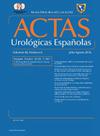管理不成功的足下矫正:全面审查战略和结果
IF 1.2
4区 医学
Q3 UROLOGY & NEPHROLOGY
引用次数: 0
摘要
尿道下裂手术失败率远端为10%,近端为30%以上。然而,现实世界的结果可能更糟,因为一些并发症出现在青春期后期或被低估。对手术成功的期望已经发生了变化,从基本的泌尿和性功能转移到实现正常的阴茎外观。研究偏向于短期随访的回顾性研究,而定性研究仍然很少。本文综述了尿道下裂手术后的并发症、处理方法和预后。方法对现有关于尿道下裂并发症及手术治疗的文献进行非系统的批判性回顾。结果常见并发症包括尿道瘘(UCF)、龟头裂(GD)、尿道狭窄(US)、尿道憩室(UD)、尿喷、复发曲度(RC)等。UCF是最常见的并发症,通过带血管瓣覆盖的多层闭合治疗。GD多发生在尿道下裂近端,需要龟头重构和组织增大。美国经常表现为金属狭窄或神经尿道狭窄,需要肉成形术或分期尿道成形术。尿路障碍是由于尿道段松动引起的,尿道段受到高尿流阻力,通过切除或重塑来治疗。尿喷与龟头融合不足或金属不规则有关,有时需要手术矫正。RC是影响性功能的重要并发症,需要通过背侧延伸或腹侧延长进行个体化矫正。结论尿道下裂并发症需要个体化评估和手术计划。晚期并发症常被忽视,应在长期随访中予以考虑。正确的手术技术选择和术后评估有助于减轻复发和改善患者预后。本文章由计算机程序翻译,如有差异,请以英文原文为准。
Manejo de la corrección fallida de hipospadias: revisión exhaustiva de estrategias y resultados
Introduction
Hypospadias surgery has a failure rate ranging from 10% for distal cases to over 30% for proximal cases. However, real-world outcomes may be worse, as some complications emerge late in puberty or are underreported. The expectations for surgical success have evolved, shifting from basic urinary and sexual functionality to achieving a normal penile appearance. Bias in research favors retrospective studies with short follow-ups, and qualitative research remains scarce. This review describes complications following hypospadias surgery, their management, and prognosis.
Method
A non-systematic critical review of existing literature on hypospadias complications and surgical management was conducted.
Results
Common complications include urethrocutaneous fistulae (UCF), glans dehiscence (GD), urethral stenosis (US), urethral diverticulae (UD), urine spraying, and recurrent curvature (RC). UCF is the most frequently reported complication, treated through multilayer closure with vascularized flap coverage. GD occurs more frequently in proximal hypospadias, requiring glans reformatting and tissue augmentation. US often manifests as meatal stenosis or neourethral strictures, requiring meatoplasty or staged urethroplasty. UD arises from loose urethral segments subjected to high urinary flow resistance and is managed via excision or remodeling. Urine spraying is linked to insufficient glans fusion or meatal irregularities, sometimes requiring surgical correction. RC is a significant complication impacting sexual function, requiring individualized correction through dorsal plication or ventral lengthening.
Conclusions
Hypospadias complications require individualized assessment and surgical planning. Late complications, often underrecognized, should be considered in long-term follow-up. Proper surgical technique selection and postoperative evaluation help mitigate recurrence and improve patient outcomes.
求助全文
通过发布文献求助,成功后即可免费获取论文全文。
去求助
来源期刊

Actas urologicas espanolas
UROLOGY & NEPHROLOGY-
CiteScore
1.90
自引率
0.00%
发文量
98
审稿时长
46 days
期刊介绍:
Actas Urológicas Españolas is an international journal dedicated to urological diseases and renal transplant. It has been the official publication of the Spanish Urology Association since 1974 and of the American Urology Confederation since 2008. Its articles cover all aspects related to urology.
Actas Urológicas Españolas, governed by the peer review system (double blinded), is published online in Spanish and English. Consequently, manuscripts may be sent in Spanish or English and bidirectional free cost translation will be provided.
 求助内容:
求助内容: 应助结果提醒方式:
应助结果提醒方式:


